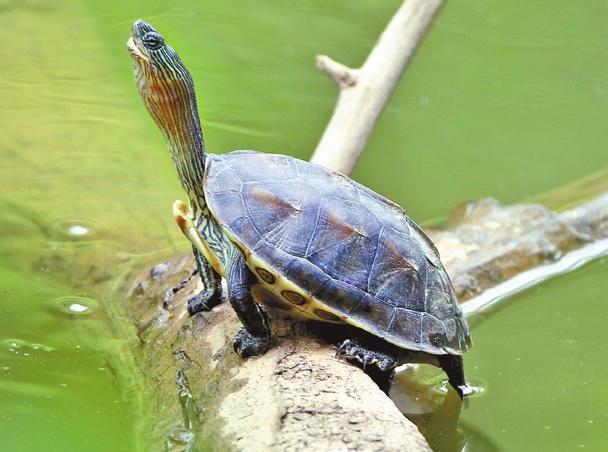
THE Chinese stripe-necked turtle (Mauremys sinensis), native to the freshwater habitats of China, is a medium-sized reptile with distinctive, alternating dark and light stripes on its neck. Its carapace ranges from brown to olive, adorned with intricate designs; the plastron (underside of their shell) is typically yellowish with dark blotches. The males have longer and thicker tails than females. Inhabiting ponds, lakes and slow rivers, they are well adapted to aquatic and semi-aquatic environments, spending significant time basking on rocks or logs. Unaffected by water conditions, they can adaptto diverse ecosystems. They feed on aquatic plants, algae, insects, crustaceans, mollusks, and small fish. This dietary flexibility allows them to occupy different niches within their habitats and help control populations of smaller organisms. Additionally, their foraging activities aid in nutrient cycling and help maintain water quality in their habitats. Breeding typically occurs during spring and summer, when females lay up to 10 eggs per clutch in sandy or loamy soil near water bodies. The incubation period lasts for around two months. Their population in Shenzhen, however, faces a significant threat from the invasive pond sliders (Trachemys scripta). This latter turtle species, native to North America, has been widely introduced as pets, many of which have escaped or been released into the wild. These invaders outcompete the natives for resources and breeding sites, leading to a decline in their population. Conservation efforts are necessary, such as raising awareness among the public about the ecological impact of invasive species and preventing their release into the local ecology. Measures are also needed to conserve the native turtles’ natural habitats for them to thrive. | 
